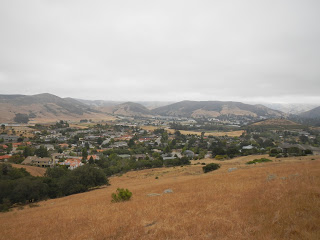"Hawkechete" processing kindling
The Hawkchete is, as it's name implies, a machete. It is constructed of carbon steel and weighs a little under 2 lbs. The blade has a black epoxy coating and is about 18" in length, with an overall length of about 23.5" including handle. the handle is a black rubber material and is "Universal" in shape, meaning it is the same shape in the hand regardless how it is held. It incorporates a lanyard hole and a short double guard to prevent the hand from sliding forward onto the blade.The blade stock is 5/64" thick by my measure and is somewhat flexible, like any machete. The Hawkebrand.com website states the machete is built by CONDOR, a very reputable tool and knife company located in El Salvador.
The most unique feature of the machete is it's unusual shape and cutting angles. It offers the user two choices...held in one way it presents as a Khukuri stye blade. Reverse it and it presents as a Parang style machete blade. The cutting edge of the Khukuri measures at about 17" while the Parang measures 13" of cutting edge.
All edges are razor-sharp. No, I don't mean very sharp; I mean RAZOR-BE-EXTREMELY-CAREFUL-SHARP! The Hawkechete has cutting edges both top and bottom and if you are using one you must be aware that it will cut in two directions, forward and backswing, so extreme care must be used when working with it. This is especially true if the blade becomes stuck in wood; if you try to free it forcefully, it can suddenly come free and a sharp edge come at you or someone beside you. This is not a criticism of the design! Just an advisement to slow down and plan cuts and think your actions through, just as we should with any edged tool....the last thing one needs is a serious laceration when one is far afield and immediate medical care is not an option.
Since I was planning a camping trip for next week, I decided to get a jump on it and use the Hawkechete to make kindling for starting my campfires. Since the Hawkechete is double-edged, batoning isn't an option, so I used it like a small splitting camp axe, biting into the wooden log and then pounding the log on a stump and driving it up through the blade. Oak, Eucalyptus, it didn't matter....the Hawkechete split them all and maintained it's edge throughout. I managed to fill a 5 gallon bucket with split kindling.
After an hour of banging away with the blade and annoying the neighborhood mutts, I found no loosening in the handle. For the most part the blade was unharmed except for two very small dents which may've been inadvertent contact with the concrete pad below my stump anvil.
I then decided to try making some curled shavings. Near the handle the blade becomes narrow-waisted and slightly curved with a straight 3" section. It is only sharpened on the inside and is ideal for use as a draw knife or for carving. Using this section I was able to produce curls for a tinder nest. Unfortunately, I was unable to ignite the curls using my ferro rod, buts was able to do so after adding some shredded jute to the nest. One could easily craft a feather stick using this feature.
In conclusion, I would opine that the Hawkchete is a unique, unconventional, and useful woods tool, but that it must be used with the caution due any double-edged blade. I would recommend that anyone considering purchase of a machete try as many different patterns and sizes as they can access and find that which best suits their purposes.
Below, I have placed two videos made today using the Hawkechete and discussing it's features, and making fire with wood shavings processed using the Hawkechete. I hope you find them useful and informative.
Happy Hiking!
GOBLIN RANGER / BUSHCRAFT WOODS DEVIL














































